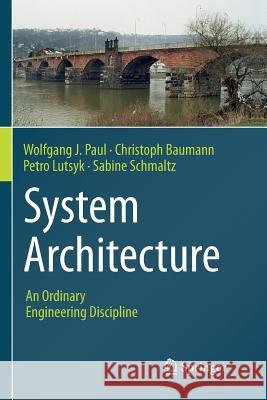System Architecture: An Ordinary Engineering Discipline » książka
topmenu
System Architecture: An Ordinary Engineering Discipline
ISBN-13: 9783319827292 / Angielski / Miękka / 2018 / 512 str.
Kategorie:
Kategorie BISAC:
Wydawca:
Springer
Język:
Angielski
ISBN-13:
9783319827292
Rok wydania:
2018
Wydanie:
Softcover Repri
Ilość stron:
512
Waga:
0.72 kg
Wymiary:
23.39 x 15.6 x 2.69
Oprawa:
Miękka
Wolumenów:
01
Dodatkowe informacje:
Wydanie ilustrowane











